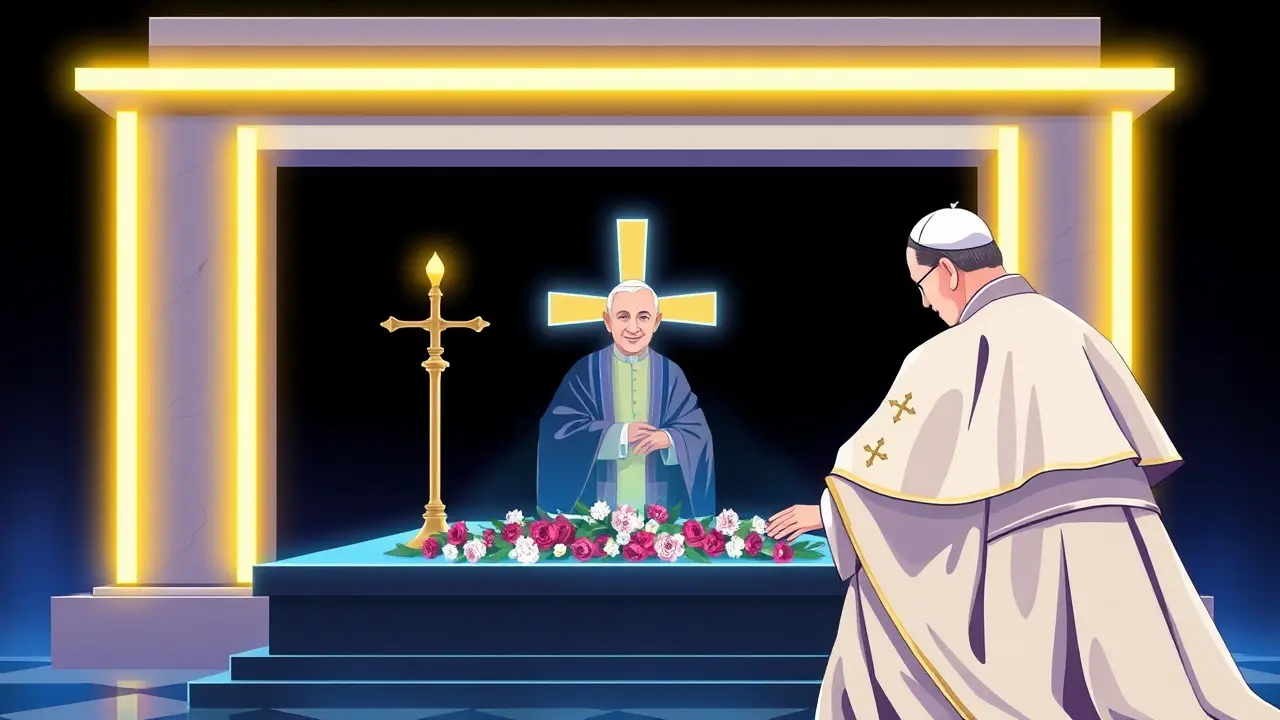
Politicsgovernments & cabinetsLeadership Transitions
Pope Leo XIV Honors Predecessor Francis at Rome Tomb.
AN
Anna Wright
11 hours ago7 min read1 comments
In a poignant display of continuity and personal reverence that speaks volumes about the often-unseen human dynamics within the highest echelons of the Catholic Church, Pope Leo XIV made a quiet yet profoundly symbolic pilgrimage to the tomb of his predecessor, Pope Francis, at the storied St. Mary Major Basilica in Rome.This act, performed a day after the formal commemoration of the dead, transcends the simple laying of flowers and offering of prayers; it is a narrative rich with the complexities of legacy, the weight of history, and the intimate, personal impact one leader can have upon another. The choice of St.Mary Major, or Santa Maria Maggiore, is itself a deeply layered decision, a basilica not only under the direct patronage of the Pope but one intrinsically linked to papal history and Marian devotion, a place where the spiritual and the administrative have intertwined for centuries. To understand the gravity of this moment is to look beyond the Vatican press release and into the soul of an institution grappling with its future.Pope Francis’s pontificate was a seismic force, a period of tumultuous change and heated debate characterized by his relentless focus on the peripheries, his challenging of clerical privilege, and his push for a more merciful, inclusive Church—a vision that undoubtedly shaped the conclave that elected his successor. Leo XIV’s visit, therefore, is not merely an act of protocol; it is a silent, powerful commentary on that inheritance.Is it an affirmation? A reconciliation with a controversial legacy? A simple, human gesture of missing a mentor? The ambiguity is its own message. We can analyze this through the lens of leadership and personal impact, much as one would study the relationship between influential political figures.The personal is always political, and in the Vatican, it is also theological. The new Pope, by kneeling at this specific tomb, engages in a dialogue with the past, acknowledging the path carved by Francis while implicitly setting his own course.It reflects a leader considering the full spectrum of his predecessor's influence—the global admiration from many of the faithful for Francis's humility and pastoral focus, contrasted sharply with the internal resistance from traditionalist factions within the Curia who viewed his reforms as destabilizing. This floral tribute becomes a act of bridge-building, a nod to the Francis-era reformers that their champion is not forgotten, while simultaneously offering a moment of quiet reflection for those who felt alienated by the previous papacy’s direction.The timing, just after the commemoration of the faithful departed, connects this papal gesture to the universal human experiences of grief, memory, and honor, grounding lofty ecclesiastical power in a shared mortal reality. It is a reminder that popes, too, are men who mourn, who reflect, and who must navigate the formidable shadows cast by giants. This single, contemplative act in the hallowed silence of the basilica may well be a more telling indicator of the coming pontificate than any initial encyclical or appointment, revealing a leader who is thoughtful, respectful of history, and acutely aware that to lead the Church forward, one must first come to terms with its immediate past.
#lead focus news
#Pope Leo XIV
#Pope Francis
#Vatican
#St. Mary Major Basilica
#papal succession
#tribute
#Catholic Church
Stay Informed. Act Smarter.
Get weekly highlights, major headlines, and expert insights — then put your knowledge to work in our live prediction markets.
© 2025 Outpoll Service LTD. All rights reserved.